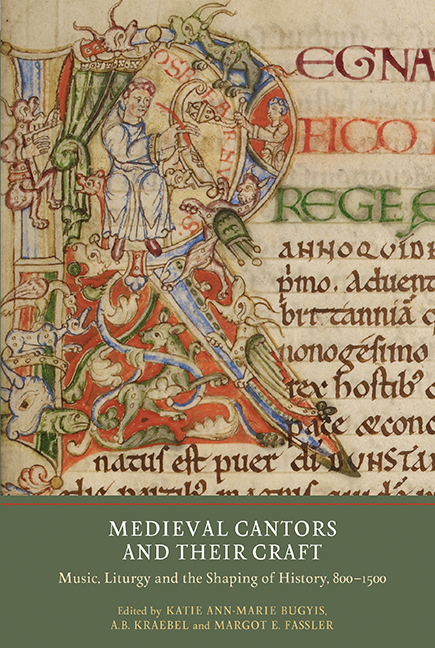Book contents
- Frontmatter
- Dedication
- Contents
- List of Illustrations
- Contributors
- Acknowledgments
- Abbreviations
- Miscellaneous Frontmatter
- Introduction
- PART I The Carolingian Period
- PART II The Eleventh Century
- 5 Adémar de Chabannes (989–1034) as Musicologist
- 6 Cantor or Canonicus? In Search of Musicians and Liturgists in Eleventh-Century Constance
- 7 Shaping the Historical Dunstan: Many Lives and a Musical Office
- 8 Female Monastic Cantors and Sacristans in Central Medieval England: Four Sketches
- PART III England in the Twelfth Century
- PART IV On the Continent: Five Case Studies
- Index of Manuscripts
- General Index
- Miscellaneous Endmatter
7 - Shaping the Historical Dunstan: Many Lives and a Musical Office
from PART II - The Eleventh Century
Published online by Cambridge University Press: 25 October 2017
- Frontmatter
- Dedication
- Contents
- List of Illustrations
- Contributors
- Acknowledgments
- Abbreviations
- Miscellaneous Frontmatter
- Introduction
- PART I The Carolingian Period
- PART II The Eleventh Century
- 5 Adémar de Chabannes (989–1034) as Musicologist
- 6 Cantor or Canonicus? In Search of Musicians and Liturgists in Eleventh-Century Constance
- 7 Shaping the Historical Dunstan: Many Lives and a Musical Office
- 8 Female Monastic Cantors and Sacristans in Central Medieval England: Four Sketches
- PART III England in the Twelfth Century
- PART IV On the Continent: Five Case Studies
- Index of Manuscripts
- General Index
- Miscellaneous Endmatter
Summary
O Magnum gloriosi presulis meritum, qui meruit vivens videre angelorum visiones vocesque mirabiles eorundem audire!
[How great the deserts of this glorious bishop, who found fit while still alive to see visions of angels and hear their wonderful voices!]
The early evidence and the first lives of Dunstan
Two Dunstans (d. 988) walk through eleventh and early twelfth century England as the most venerated of saints. One emerges through the study of contemporary historical sources, while the other is a character that developed over time, known through liturgical celebration as well as in folklore and oral traditions. There is rich evidence for the transformation of the first Dunstan into the second, evidence of changing character traits and descriptions of historical events associated with his life. Several manuscripts can be associated with him and his students, while letters and charters are eyewitnesses to his life; at the same time, there are five vite from the late tenth, eleventh and early twelfth centuries to document his saintly attributes, as well as an office copied c. 1230 (See Table 7.1 and Appendix 1). His character is also reflected in other contemporary histories and hagiography. This chapter explores how a historical understanding of the saint developed over time, from the tenth to the early thirteenth century. Throughout this long period, several cantor-historians have roles to play, including the musician who finally put the tradition together in its final (and only surviving) musical office.
The outline of known milestones in the saint's life recently sketched by Michael Winterbottom and Michael Lapidge draws on the two earliest surviving vite, which they edit and translate, as well on other documents and charters (see Table 7.2). The tenth-century life by a writer called simply B, someone who knew Dunstan and was, early in the saint's life, an eyewitness to some of the events he reported, is justly privileged as evidence, a case study of the major role of hagiographical writings for understanding the past. Information concerning Dunstan's childhood and early upbringing shows him to have been well born (Wessex aristocracy), a member of the royal entourage in his twenties and appointed abbot of Glastonbury during the reign of King Edmund, while still apparently very young. After a brief time of exile, he returned to be a bishop, though retaining his relationship to Glastonbury.
- Type
- Chapter
- Information
- Medieval Cantors and their CraftMusic, Liturgy and the Shaping of History, 800-1500, pp. 125 - 150Publisher: Boydell & BrewerPrint publication year: 2017



